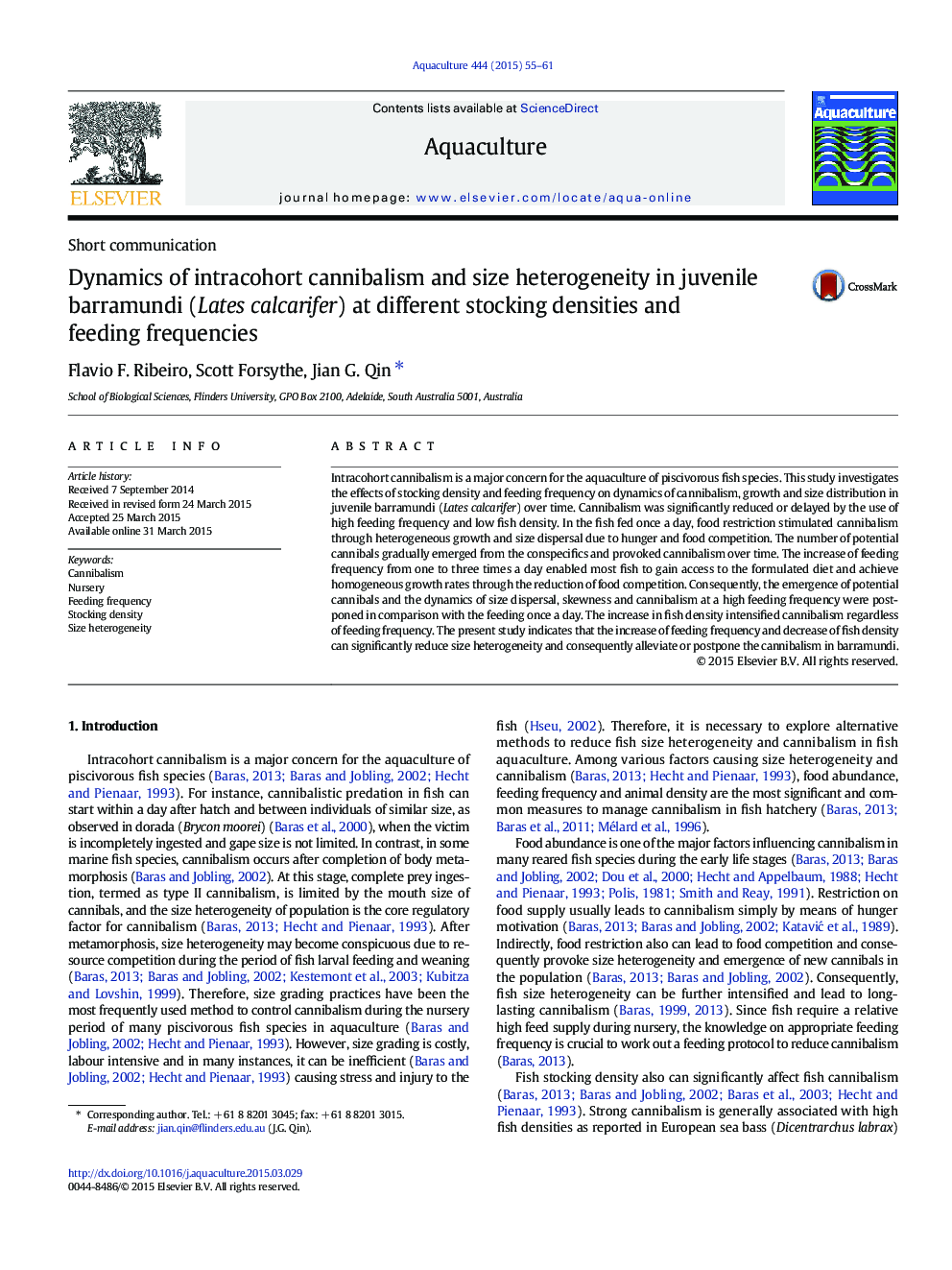| Article ID | Journal | Published Year | Pages | File Type |
|---|---|---|---|---|
| 8494660 | Aquaculture | 2015 | 7 Pages |
Abstract
Intracohort cannibalism is a major concern for the aquaculture of piscivorous fish species. This study investigates the effects of stocking density and feeding frequency on dynamics of cannibalism, growth and size distribution in juvenile barramundi (Lates calcarifer) over time. Cannibalism was significantly reduced or delayed by the use of high feeding frequency and low fish density. In the fish fed once a day, food restriction stimulated cannibalism through heterogeneous growth and size dispersal due to hunger and food competition. The number of potential cannibals gradually emerged from the conspecifics and provoked cannibalism over time. The increase of feeding frequency from one to three times a day enabled most fish to gain access to the formulated diet and achieve homogeneous growth rates through the reduction of food competition. Consequently, the emergence of potential cannibals and the dynamics of size dispersal, skewness and cannibalism at a high feeding frequency were postponed in comparison with the feeding once a day. The increase in fish density intensified cannibalism regardless of feeding frequency. The present study indicates that the increase of feeding frequency and decrease of fish density can significantly reduce size heterogeneity and consequently alleviate or postpone the cannibalism in barramundi.
Related Topics
Life Sciences
Agricultural and Biological Sciences
Aquatic Science
Authors
Flavio F. Ribeiro, Scott Forsythe, Jian G. Qin,
